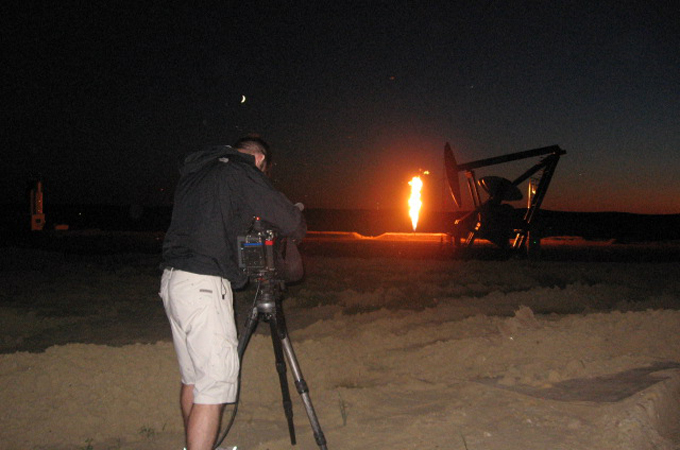
Ghost Town to Boom Town
North Dakota’s oil boom has transformed the state’s economy – but it is a mixed blessing for local communities.
Just a few years ago, North Dakota was on a downward spiral. The population was declining dramatically and rural population centres were struggling not to turn into ghost towns. But an oil boom has dramatically transformed the people, environment and economy.
Filmmaker Janae Hagen wanted to see for herself the impact the oil boom is having on what remains an isolated corner of the US and how her slice of the state has gone from a Ghost Town to Boom Town.
When I left for college four years ago, I had no intention of returning permanently. My hometown, Crosby, North Dakota, did not have any opportunities for me, the economy was stagnant and the town’s energy was waning.
| JOIN THE DEBATE |
|
|
The story was the same across all the small towns speckled throughout western North Dakota. Schools were closing and the railroad towns of the frontier were quickly becoming dilapidated silhouettes of their former selves.
But now, the corner of the state I call home is the hot spot to be in the US. Towns like Crosby, Stanley, Ray and Williston are positioned in the middle of one of the largest oil shale formations in North America, the Bakken.
People from all across the US and Canada are flocking to northwest North Dakota in the hope of striking it rich. It is a modern day gold rush.
Farmers who have not turned a profit from their fields since the 1980s are now receiving thousands of dollars each month from wells on their land.
Campgrounds that have not seen much business in 20 years are now overflowing. Hotels need to be booked months in advance. Rental prices on old homes and apartments are as expensive as a downtown flat in a major city. It is so difficult to find a place to live that some are living in their cars.
With January fast approaching, I fear that the rickety trailers will not be able to keep out the fierce northwest winds.
Curse or blessing?
 |
Throughout filming, I was surprised at the variety of impressions people had about the boom.
Many are spending two weeks at a time hundreds of miles away from their family in order to make a good living.
Locals are divided into two distinct groups: those who have mineral rights and oil wells and those who only own the surface of the land or no land at all.
Surface owners are starting to rally for more landowner rights so they receive more than a one-time access fee.
Those who own the mineral rights – what lies beneath the surface of the land – are finally making money after a quarter of a century of red ink.
In the middle of these groups are handfuls of those who recognise the consequences of such rapid and widespread growth.
Looking out of my 15th floor apartment in Hangzhou, China, I can see intense growing pains from my window. Countless high rises are wrapped in green cocoons of scaffolding, waiting to reveal themselves as quickly as they can be built.
Countless cranes line the skyline, and locals complain that the city is growing too fast for its own good. Temporary housing is set up on massive construction sites that run round the clock.
It is amazing to see how the same issues are plaguing my hometown on the other side of the planet.
Nothing about the boom is sustainable: too much water is being used; flares are burning off too much natural gas and oil companies are stripping four acres of land every other mile for pumping units.
Amidst it all, families and long-time friends are quarrelling over royalty cheques and property owners are gauging rent prices. We are losing sight of our culture and values for the promise of a quick dollar.
I am upset that more people are not aware of the consequences of the rapid growth. Landowners and towns need to tell the oil companies to slow down – the oil is not going anywhere, and the world’s thirst will not be quenched any time soon.
This is the perfect chance for my hometown to finally develop lucrative industries that might encourage more young people like me to return home.
It broke my heart to see my hometown dying in 2006. But today’s growth is equally alarming; especially for a place that prides itself on a slow and steady way of life.
Ghost Town to Boom Town can be seen from Sunday, November 28, at the following times GMT: Sunday: 0830, 1900; Monday: 0330, 1400, 2330.


